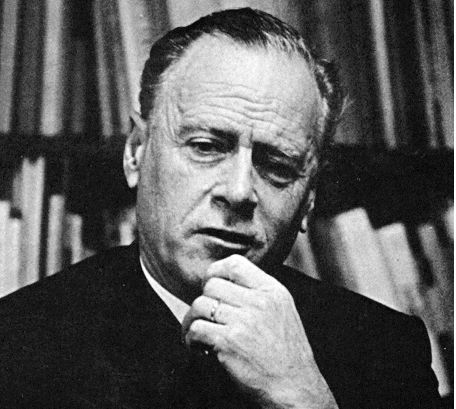Marshall McLuhan was a Canadian often considered the leading prophet of the electronic age. An educator, literary critic, philosopher and rhetorician, McLuhan is well known for his expression, "the medium is the message" in analysing and commenting on numerous examples of persuasion in contemporary pop culture. He studied the influence of communication media independent of their content.
The medium is the message relates to the influence of the mode of communication a message uses in its delivery and the perceived content. It looks at how a person views a message because of how it is presented. McLuhan's belief was that the content of the medium (Medium is the mode of communication be it television, print, etc.) did not actually matter or had little impact on society but the medium had a major effect.
Saturday, March 20, 2010
Friday, March 19, 2010
Saturday, March 13, 2010
Hooray, The Butter is Gone!
Hurrah, Die Butter ist Alle! - John Heartfield (Germany 1935)
John Heartfield, an anti-Nazi German, developed photomontage to make political statements. He sought to undermine the Nazi propaganda and growing communist nationalism in Germany through his manipulation and distribution of images, often using the image of Adolf Hitler and the Swastika in a satirical manner.
He even changed his name to Heartfield from Helmut Herzfeld to criticise the anti-British sentiment in Germany at the time.
Adolf the Superman
The Seeds of Death
Thursday, March 11, 2010
Modern-ism
Scientific Revolution gave way to the industrial revolution which invented mass production, making use of the lower class as unchecked labor. William Morris opposed this unchecked labor in a time when a move towards social philosophies began.
Modernism in design and art followed Arts & Crafts. At the same time, the Bauhaus in Germany had Russian Constructivism emerging.
Bauhaus was a school which believed less is more, reductionism, minimalism. Reductionism is reducing things to their bare minimum.
Bauhaus School Building - Walter Gropius (Germany 1926)
Mondrian has become emblematic of Modernism.
Composition - Mondrian
Russian constructivists absorb futurism and cubism to create a new movement which unifies communist ideology with visual form.
TO BE CONTINUED...
Thursday, March 4, 2010
New Art? ...Art Nouveau
Sinuous designs, yet restrained and elegant, Art Nouveau is a freer organic line than Arts & Crafts. Arts & Crafts would pack lines making things hectic, whereas Art Nouveau would allow the lines to flow. Function and Form work together.
Banister - Victor Horta (Belgium 1898)
The dominant visual motifs included energetic and organic plant-like line and vine tendrils.
Staircase - Maison & Ateller Horta (Belgium 1898)
Art Nouveau designers embraced the Arts & Crafts philosophy of honesty to materials and fitness of purpose. The decorative use of these motifs was less an attempt to cover up than a way to enhance the function of the material.
In the 1800’s the Europeans had a fascination with anything Japanese. Artifacts and art from Japan influenced many artists. This inspired flat colors and simplified shapes due to the technique.
Woodblock Print - Hiroshige (Japan 1857)
Simplified figures and silhouettes in art such as that of Degas.
"Le Cafe-Concert Des Ambassadeurs" - Edgar Degas (France 1977)
Joining colors gives unity and direction for the eyes as used by Toulouse-Lautrec.
Poster - Toulouse-Lautrec (France 1892)
In the 60’s and 70’s, the psychedelic era revived a lot of Art Nouveau, such as fonts and abstracted hair styling.
Poster - William Bradley (USA 1896)
Okay kids, it’s time for Arts & Crafts
Arts & Crafts came about as a reaction to the poor aesthetic quality of factory made goods in the industrial revolution and to the Victorian Era. It was a socialist reform movement (socialism being a necessary reaction to the industrialism of the era) that embraced artists, scientists, architects, designers, etc, of all types. It is recognized as the bridge between traditional Victorian Values and the modern movement.
Book - JM Dent (Great Britain 1906)
William Morris dedicated his life to rediscovering the traditional standards that existed prior to the industrial revolution and fighting “ugliness in all its forms”. He believed in a Truth to materials (eg not painting the wood but letting it show).
William Morris (1834-96) "The Father of the Modern Movement"
Wallpaper, Carpet, Upholstery, Glassware - William Morris (c.1888)
Frank Lloyd Wright was heavily influenced by the Arts & Crafts movement with the use of a lot of geometry. It’s a geometric concept. It's like a box with boxes inside. He had a love of materials and an honesty to materials. Wood is not covered. No garish colors, very organic, earthy tones. A lot of natural timber.
Living Room - Frank Lloyd Write (USA 1908)
Subscribe to:
Posts (Atom)







.png)

.png)
.png)
.png)
.png)
.png)
.png)
.png)
.png)
+)
.png)
.png)